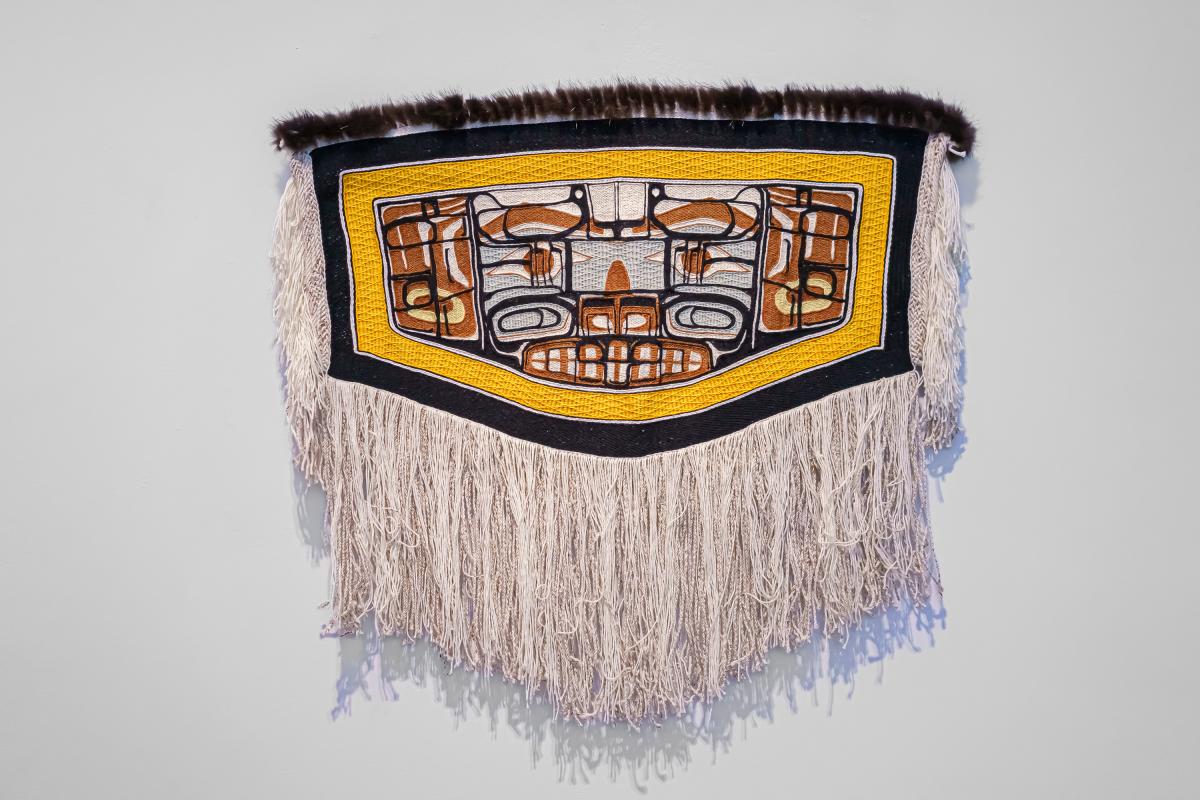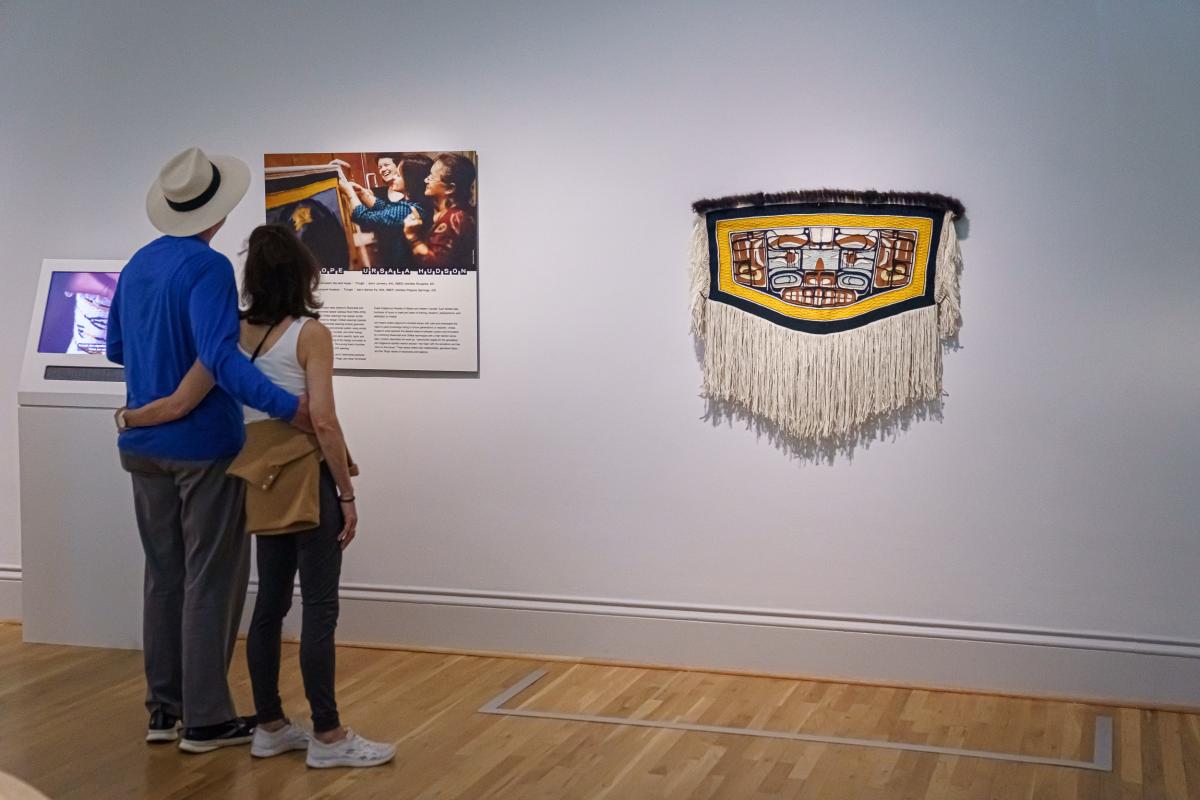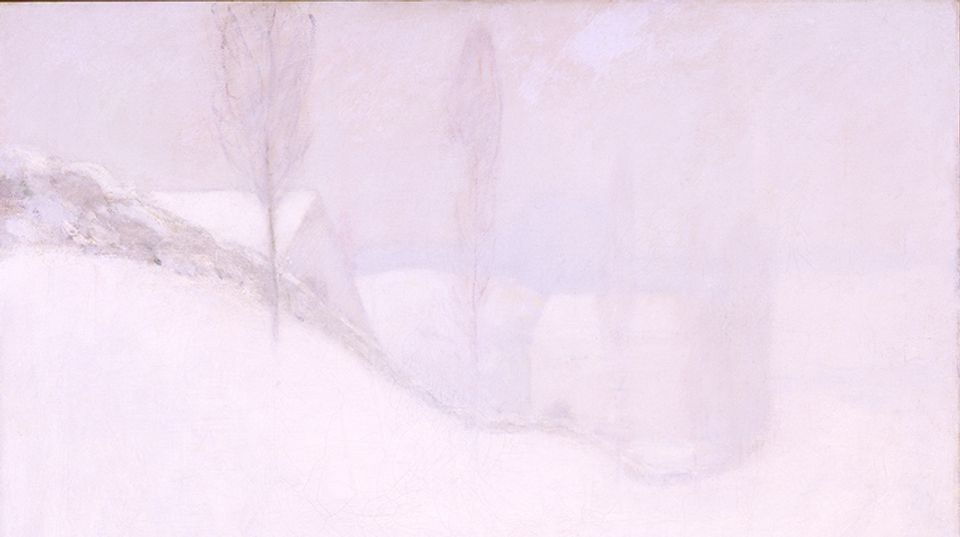Have you ever wondered about the painstakingly complex and time-honored methods behind making a beautiful, traditional robe by hand? Can you imagine how many hours it takes to complete such a project?
Lily Hope (Tlingit), one of the featured artists in Sharing Honors and Burdens: Renwick Invitational 2023, learned weaving from the best-her mother, Clarissa Rizal (Tlingit) and artist Kay Field Parker.
She apprenticed for more than a decade in Chilkat weaving with Rizal who, until her untimely passing in 2016, was one of the last living apprentices of the late master Chilkat weaver Jennie Thlunaut. Hope endeavors to leave honorable weavers in her place.
Hope is one of few living designers of ceremonial dancing blankets, flowing garments created and worn by northern Northwest Coast Alaska Native peoples. Her contemporary works in textile and paper collage weave together Ravenstail and Chilkat design. She teaches both finger-twined styles extensively in person (and virtually since COVID-19) in the Yukon Territory, down the coast of Southeast Alaska, and in Washington and Oregon.
Chilkat weavings can be identified through the use of formline shapes and images that are distinct to northern Northwest Coast Native artwork. Ravenstail weavings tend to employ geometric designs, based on intricate mathematical patterns.
Another way to distinguish between the two techniques to identify the material of the warp, or the threads that run vertically through a weaving. At the risk of oversimplifying, Ravenstail warp generally contains mostly wool, while Chilkat warp is a blend of wool and cedar “threads,” or strands of the inner cadmium layer of cedar bark. To create Chilkat warp, the cedar bark is boiled for hours to remove sap, separating the cedar fibers into thin, straight threads that are then added in proportionate amounts to wool as it is thigh spun from roving (the strand of fibers) into yarn. Thigh spinning relies on constant steady pressure and attention from the spinner, who uses their thigh as a workspace. The spinner presses their hand in a sliding motion down their thigh, mixing the cedar threads and wool roving together. In doing so, they achieve the appropriate thread weight without the use of a spinning machine or wheel. Today, only a handful of weavers and fiber artists use the thigh spinning technique.
While Hope’s pieces emphasize present-day challenges and the creation of lasting connections for future generations of weavers, they also honor ancestors, whether through the act of weaving, as in Between Worlds, or through a spiritual connection. The act of caring for ancestors after they have passed away is a widespread Indigenous practice.
The Between Worlds robe, a commissioned piece created for the Renwick Invitational, is a departure from customary Chilkat weavings, with its bold outlines between the design elements. The thick outlines create the faces of the ancestors, who gaze back at the weaver as the weaver gives them physical form, linking past, present, and future in the single act of creating a Chilkat textile.
Based on text created for SAAM’s special exhibition Sharing Honors and Burdens: Renwick Invitational 2023. Katie Hondorf contributed to this story.



















